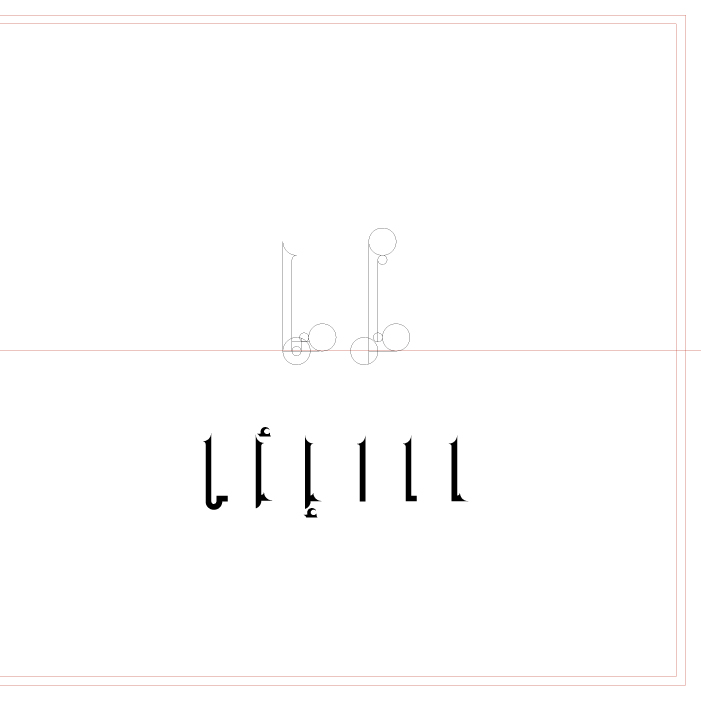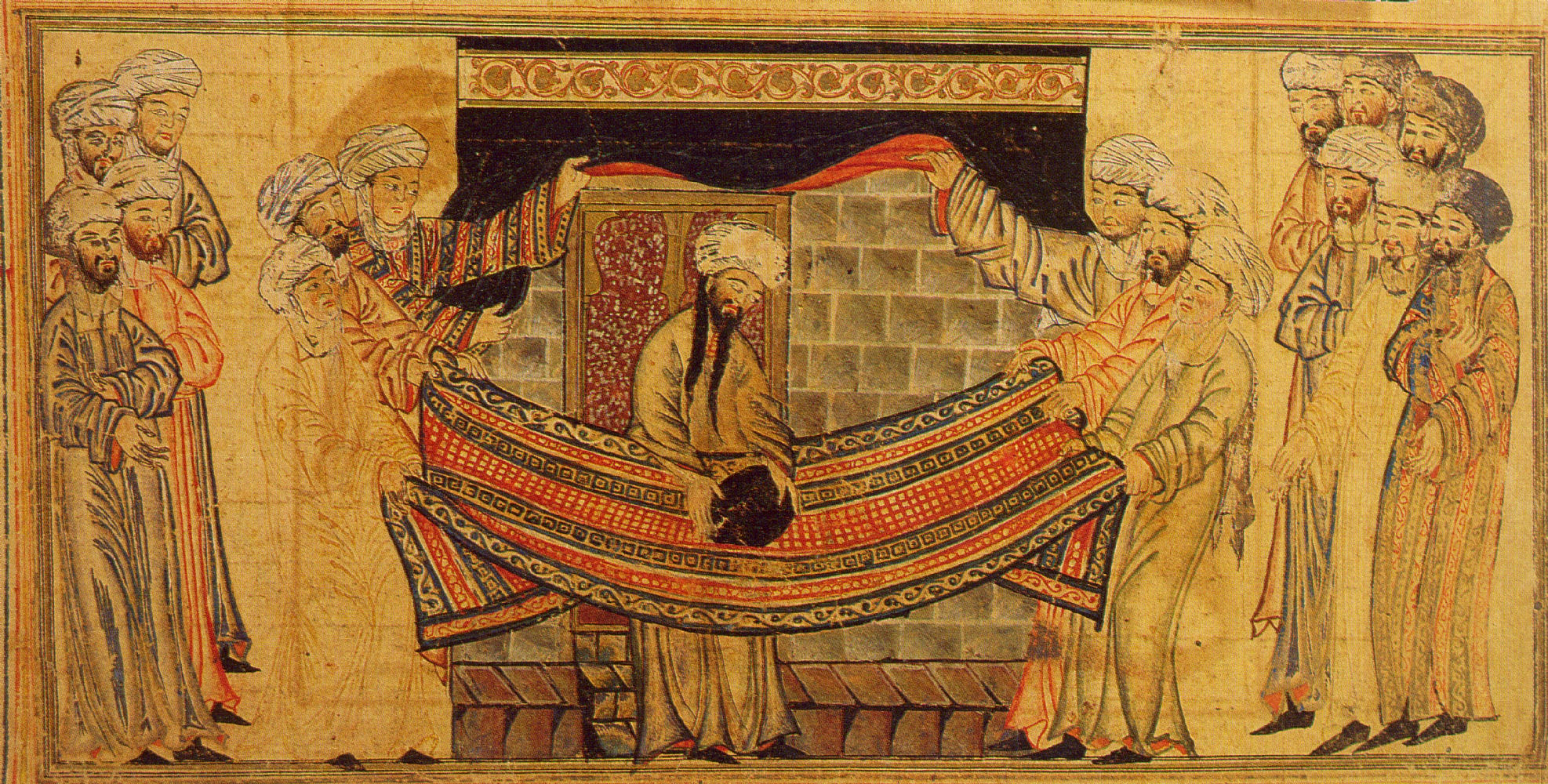/blak/ ( In Islamic Tradition)
Introduction.
There’s a an idea I always had that people never actually learn new things, that we always knew the truth; and learning is really just remembering the knowledge you have inside you, that’s why learning about something you’re passionate about is almost effortless. To me using monochrome palettes in my life in general always felt aligned with my mental state of mind and I didn’t feel like I needed a reason to why I choose this palette because I knew I probably have the reasons to that within, and the comfort and trust that I have in chromatic colours is only a natural reaction to that.
Can you imagine a world without colours? The expected answer would be: dull, sad and emotionless. The next question here is; How did we decide that these are the impressions that monochrome gives?
When I asked myself the first question, The Giver came to my mind, a movie about a post ‘ruin day’, Jonas -the receiver- starts to also slowly see colours, in his lover’s hair, in the sunset and in trees.
Colour helps us recognise what agitates the heart, we all knew that Jonas is going to fall in love with Fiona when he saw the sunset for the first time, and remembered her fiery hair. The other face of colours is what we make of it, colour really is nothing but a point in the spectrum, our eye is sensitive to one small range of frequencies within that electromagnetic spectrum’s wide range of wavelengths. That range we’re sensitive to is what makes colour seen to us, everything outside of that range is black. Once Isaac Newton discovered that, everyone went into frenzy, black was not longer a colour!
Even though we are aware of the almost secondary need for colour as an experience, we’re still attached to the idea of it separating the world around us in a way that’s out of our control. Humans have this urging need to dwell about something. for us, when it came to colour we either had to be in control of colour or disregard it completely. From that need, we developed a lot of pallets, trying to mix different colours to create the perfect secondary shades, we tried to scientifically analyse it and understand it in order to have control over it.
This article is on the colour black, what state of mind it embodies in Islamic tradition, its a chapter from my MA thesis that investigates the colour in different traditions. And an attempt to read the history of this -quite controversial colour- through reading the effect it had from a theological and sociological point of view.
The linguistics.
The colour black has 22 words in Arabic, some describes a colour and others used as an expression to exaggerate, as is a large crowd, or a large, dense forest. The crowd sense can extend to large majorities of other kinds, including great wealth, as in the remark that someone has much sawad.
سَوَادٍ : جمع سَّدُوُّ
إِسْوِدادٌ , إِسْوِدَاد , دُجْنَة , دُعْجَة , دُهْمَة , ظَلاَم , ظُلْمَة , عَتْمَة , غَيْهَب , فُحُومَة , كُهْبَة ، أَدْهَم , أَسْوَد , العَدَد الكَثِير , جَمِيع , جُمْهُور , دَهْمَاء , رَعَاع , زَحْمَة , زِحَام , ظُلْمَة , عَامَّة , عَامَّ ’ , غَمَار , غِرْبِيب , فاحِم , كَثْرَة , كُلّ ، سُحَام , سَخَم , سُخْمَة
It could refer to things that are precious, especially in the desert: ‘the two blacks’ are water and dates. Which is a meaning that comes from the story Aisha -the wife’s prophet- about when she was in the desert with the prophet and they didn’t have anything except for water and dates, which she described by Al-Aswadan ‘the two blacks’. It was also used commonly to differentiate race, Arabs being black and Foreigners being red. It can also be active visually, a distant figure is ‘black’.
The Politics.
Perhaps one of the first things that comes in mind when talking about black and Islam; is the colour of the Kaaba’s cloth or Kiswa, which throughout history, wasn’t always that colour. during the prophet’s era, the kiswa was made of cloths from the traditional Yamani costume, it was more colourful with the combination of leather and linen. until the beginning of the Naser Al-Abbasi Caliphate ruling, where he changed it to a green cover and then changed it again to a black one, which is a tradition that continued until our modern days.
In the eastern corner of the ancient granite shrine in Mecca (The Kaaba) is the black stone, still set where Ibrahim placed it. It was white when it fell from heaven, in the time of Adam, but long ago was blackened by the sins of men and was also said that it turned black because of a big fire that happened in the Holy Mosque pre-Islam. Black was always used to describe sins in Islam, Muhammad told a story of his childhood: that when he was three or four, playing in the countryside, two men in white robes came up to him with a golden bowl full of snow. They cut open his chest and found and removed a black spot from it; then they cleansed his heart with snow and replaced it. Since then, in Islamic tradition, the phrase ‘black spot’ has referred to the hidden sins of the heart, a similar concept to the bible describing sin as a ‘stain’.
Muhammad was heard expressing his hate for the colour black in several occasions, describing it as the colour of Shaitaan (Satan), and he even disliked it in mourning and sadness. His favourite colour was known to be green, that’s what the colour of his turban was, green reminded him of the cushions and silk robes in Heaven as it was described in the Quraan “Reclining on green cushions and fair carpets.” Al-Rahman 55.
See, In the beginning of Islam, the target for Muhammed PBUH was the lower classes of society, therefore the tone of his message leaned more towards being lenient and soft spoken. The prophet spoke more of heavens and beauty than anything else. An interesting transition can be seen after the Migration to Abyssinia, Islam slowly started being more political, the prophet had to continue his goal and to do so, he had to have stronger and more important alliance by showing firmness and strength. The prophet, and those behind him were seen often wearing black robes in military campaigns after that, the flag under which they fought was also plain black and was known as Al-Uqab (the eagle).
After the death of the prophet PBUH, several unfortunate events happened arguing positions of power in the Islamic community. One of was the killing of Ali, which initiated the great schism in Islam, a group of muslims drifted and called themselves Shi’a, the colour they adopted was black since that time to show their alliance and mourning. It’s fair to say that the growth of black fashions in Arabia had its impact on Western culture, the use of black by monarchs, ministers and official law officers came after the Caliphates adopted this colour to enforce their ruling and show their power. It cannot be said there was a sudden imitation, for the use of black in Europe spread slowly over centuries, and mainly spread in those centuries when Abbasid power had shrunk.
The Visual.
The Arabic language used colour quite a lot to describe spiritual and social aspects. It was only normal that with the development of Islamic art and architecture came the rise of symbolism and philosophy. The prophet spoke of colours and astronomy when he was telling the story of Al Isra' wal Miraj, the great trip through the seven heavens riding his Buraq, describing the heavens with colours of smoke, metal, copper, white silver, gold, green ruby and white pearl.
Ibn Arabi was known to use the relationship between colour and astronomy to read spiritual conditions of the soul, saying that the sight of the colour white meant peace, yellow is faith, blue is contentment, green is comfort, and black is dwelling and certainty.
When Islamic tradition went deep into symbolism and science, artists felt the necessity to reflect that on the Arts too. The Islamic artist was connected to the divine in his journey of making art, colour was not expected to just be used to add beauty to objects, but rather had several layers of symbolism based on astronomy, phrases from the Quran or Hadith and even the nature around them.
The sacred.
One of the most spiritual and sacred forms of art in Islam is calligraphy, it's used to write down the words of God, and in order to do that, one had to follow strict asthmatics of beauty and balance.



one of the aspects that Muslim artists looked at when it came to script was the ink they used. Qadi Ahmad (1553–1616), the leading calligrapher of his time in Morocco; gives a recipe for black ink that includes ten local ingredients (hemp-oil soot, gum Arabic, gallants, henna, mu, indigo, aftimun, aloe, saffron and rose water) and four foreign ingredients (Cyprus alum, Indian salt, Egyptian sugar and Tibetan musk). This mixture of exotic materials shows the deep connection between the artist and his materials, I can almost see Al-Qadi in his workshop making black from the soot of hashish, transcending in the process with the smell alongside the fragrance of rosewater and musk.
A clue to why this ink’s ingredients might have been so rich comes from nothing that the Arabic word for ink, midad, is related to the word for divine substance or matter, madda. The connection between the words for ink and divine substance is no coincidence. It reflects a profound understanding of creation. The Andalusian, Ibn Arabi, compared the world to a book written by God.
“ ...there did not remain a single place in the whole universe where my word was not inscribed, nor was there any writing which did not come from my substance and my dictation”
Refrences:
Black: The History of a Color - Michael Pastoureau
Chromophobia - David Batchelor
Lisan Al-Arab - Ibn Manẓūr
In Praise of Shadows - Jun'ichirō Tanizaki
دلالات اللون في الفن العربي الإسلامي- عياض عبدالرحمن الدوري
Symbolism of Colour in Islamic Art - AlDawery
The Giver (movie) (2014)








